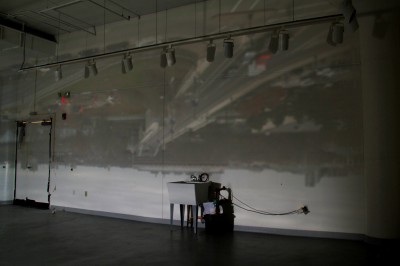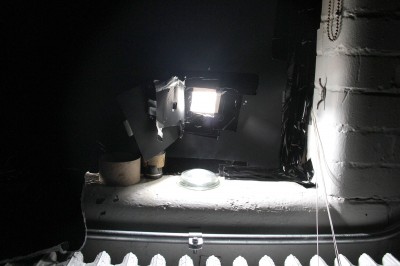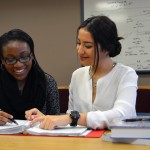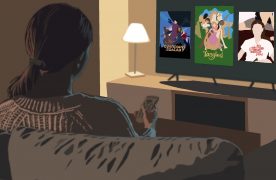When Toni Pepe Dan found a box full of camera lenses over the summer, she knew she had to make something special out of them.
“I didn’t have the heart to throw them away, so I thought I could find some sort of use for them,” said Dan, a professor in the Boston University College of Fine Arts. “I immediately thought that maybe we could make some type of camera or something, and then I thought of a camera obscura, which has been around since Aristotle’s time—it’s a very old tool.”

According to Dan, the camera obscura “started off as a room where you would just cut a little hole and that would be your aperture.” Through this hole, light travels through and projects an outside image onto a surface inside.
“It’s really neat, and it’s actually the same way our brain works,” Dan said. “It’s the same way a camera works, too, but there’s a mirror that projects the image.”
What started as Dan’s fuzzy idea became the Camera Obscura Project. Situated in a room in the Fuller Building, the installation consists of fabric-covered walls, blacked-out windows and a small hole, serving as the “aperture,” cut out of the chamber. Through it, a view of Commonwealth Avenue and the Boston University Bridge projects onto the wall.
“It’s a really beautiful image,” Dan said. “When you sit in there, you can hear the sounds of the city, you can hear the traffic passing by and you see this surreal sort of image hovering all around you – it’s kind of a nice meditative space.”
This room-sized camera obscura, Dan said, is a tribute to one of the earliest forms of photography, used by artists and scientists alike.
“There are many other artists who use the camera obscura,” Dan said. “It’s something that’s been floating around, and it’s also a really wonderful camera-craft disciplinary tool. It’s a tool that’s been used by scientists such as Leonardo da Vinci.”
Because the camera obscura appears across so many fields, Dan saw building one as a great way to capture the intrigue of students in CFA and beyond. With the idea in focus, Dan got to work, doing projects with her photography classes.
“We hung the fabric and the paper, we blacked out all the windows and talked about what were the best ways to block out the light, so the light wouldn’t come through the door,” Dan said. “We were working in the dark room that day, so when they had free time, they would come to the camera obscura room and help me set up.”

Her class also photographed their camera obscura and watched a documentary that featured the device.
“We watched ‘Tim’s Vermeer,’ which is about the theory that [Dutch painter Johannes] Vermeer used a camera obscura in his paintings because they have a very photographic look to them,” Dan said. “That way, students could see the role that a camera obscura had in art history.”
And even though Dan didn’t get to use her original lenses, she hasn’t forgotten their role in the Camera Obscura Project – and possible projects still to come.
“I still haven’t found a use for those lenses,” Dan said. “But I want to, so maybe something else will come out of it.”
The Camera Obscura Project will be held until Dec. 13th in Room 530 of the Fuller Building in 808 Commonwealth Ave. On Dec. 8th from 4-6 p.m., there will be a closing reception showcasing the collaborative work from students in CFA music and visual arts classes, as well as College of Communication photojournalists.














